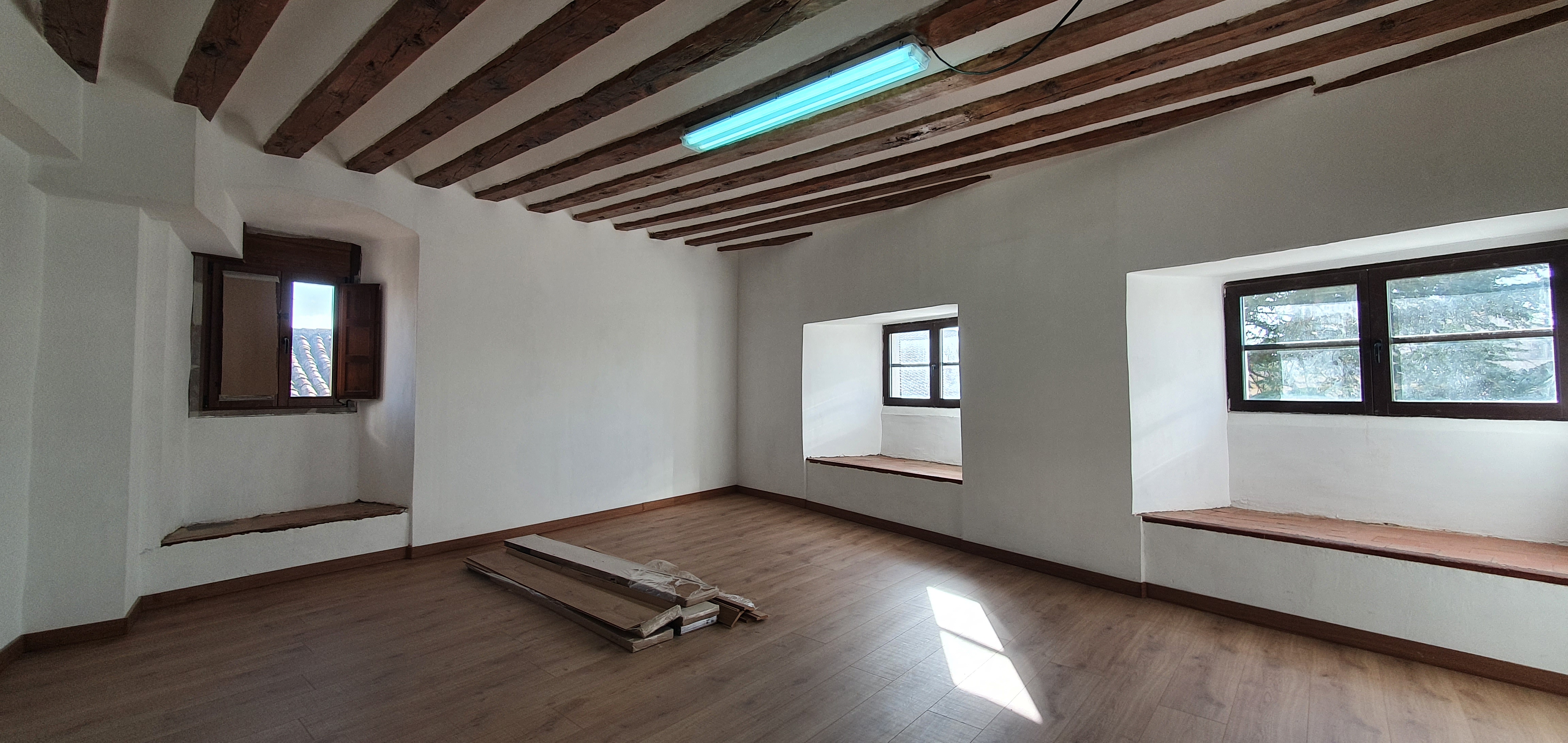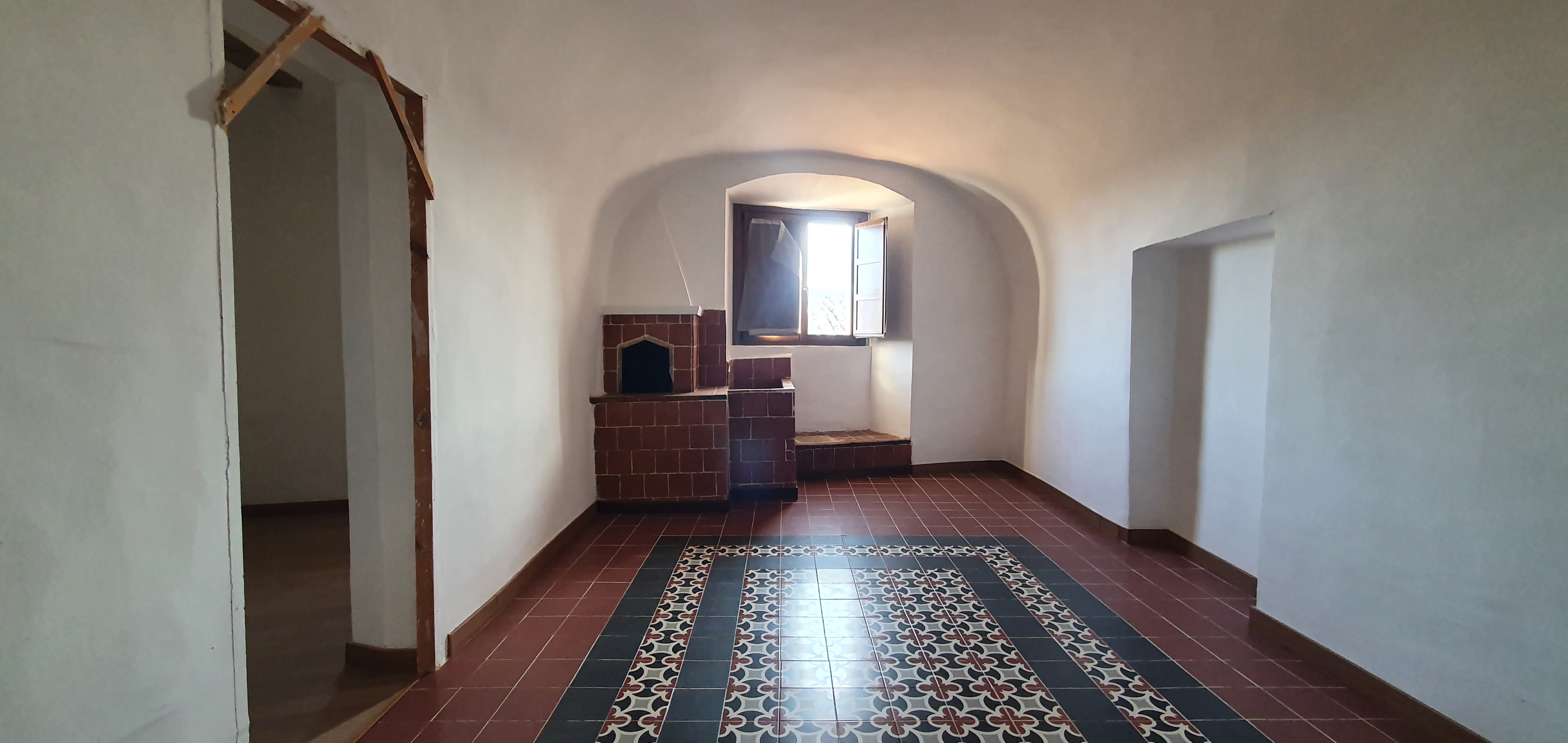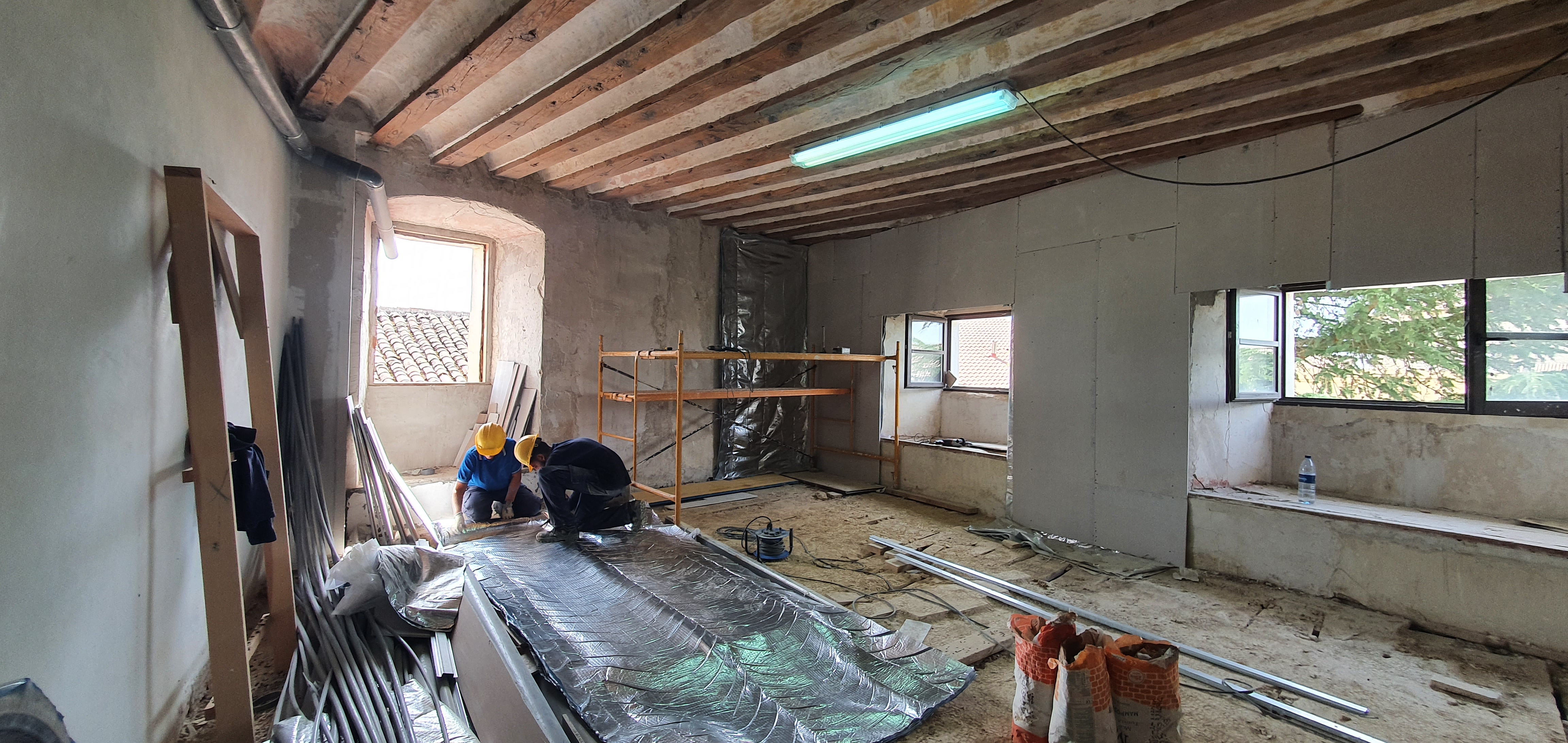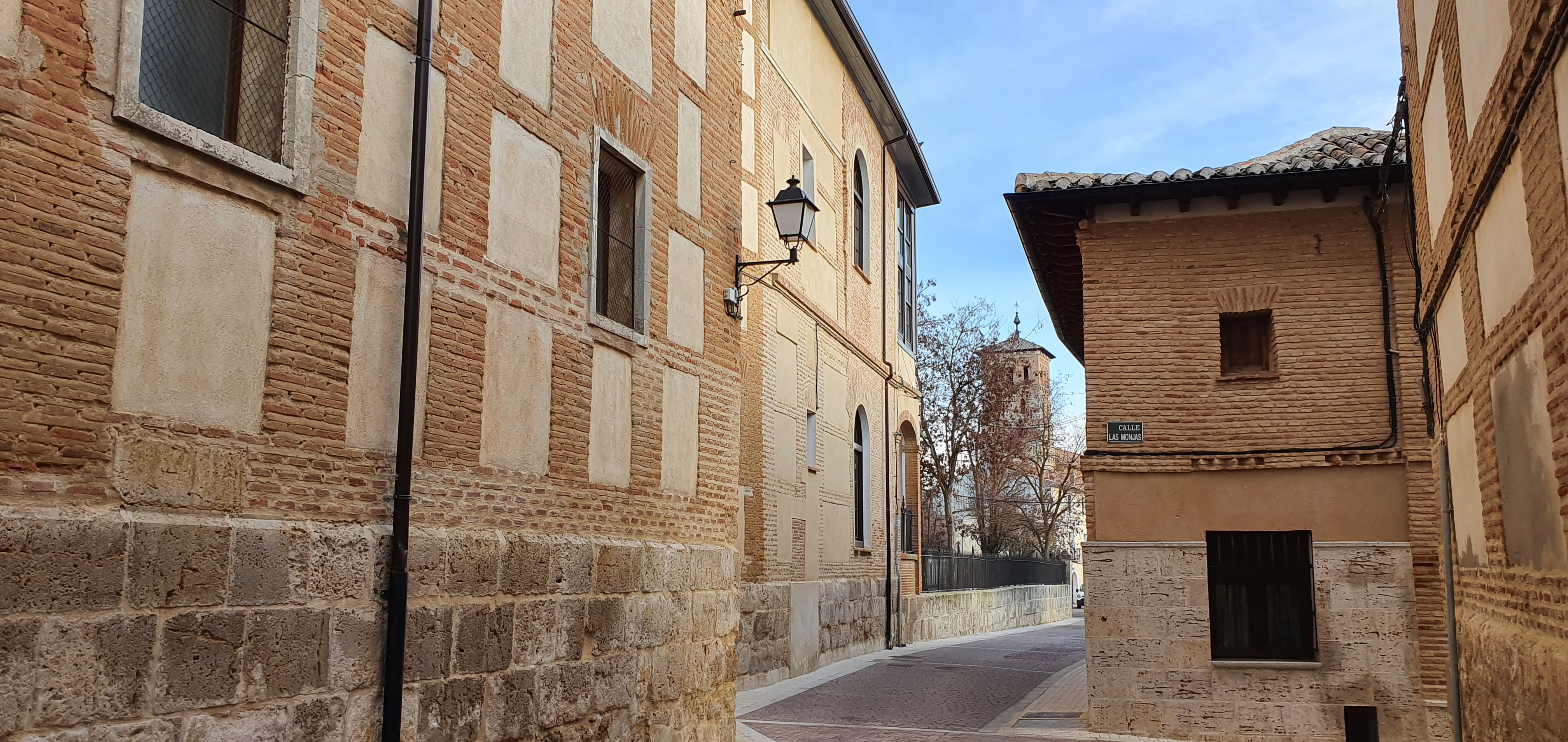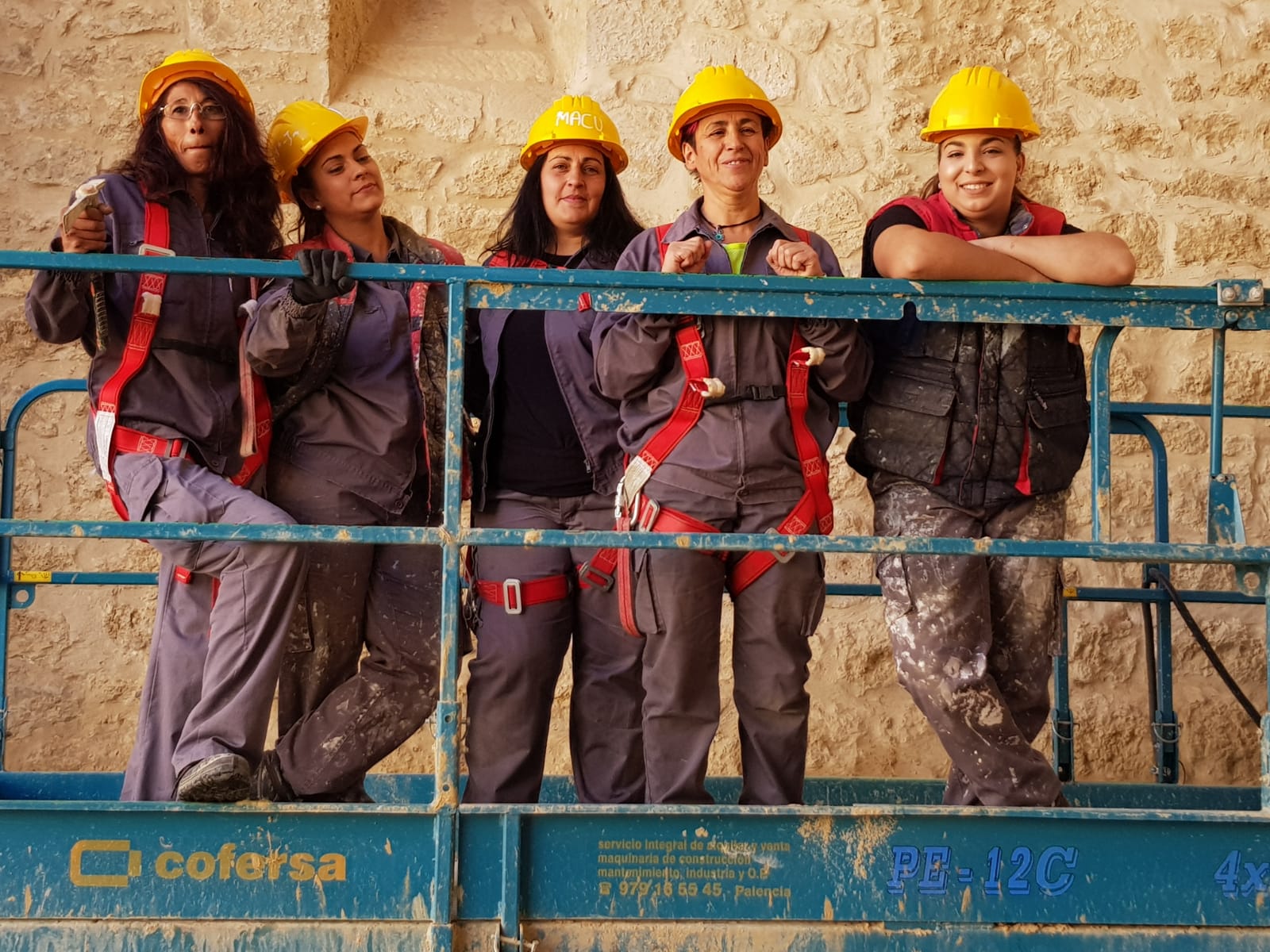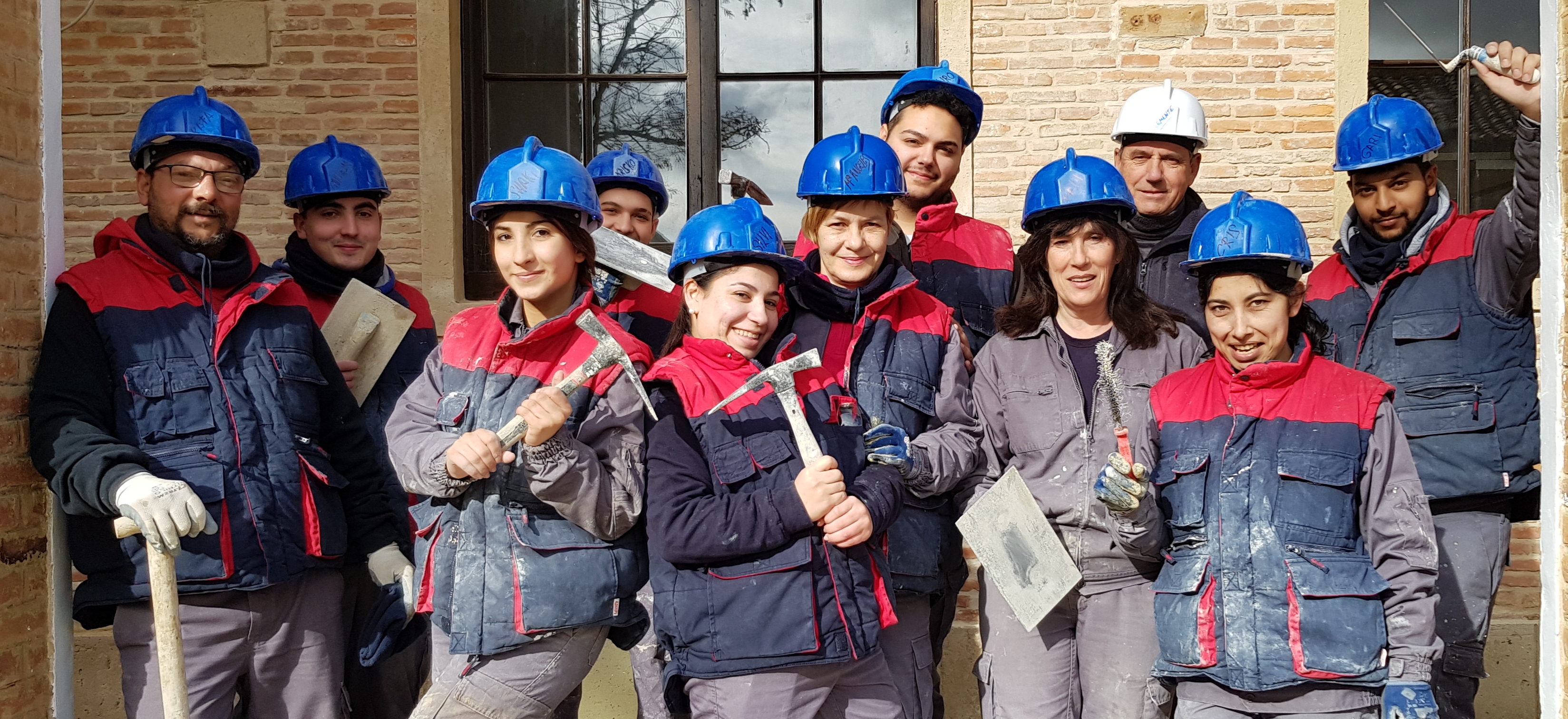Artistic Residency for Performing Arts
Rehabilitation of the Old Teachers' House as an artistic residence for the Performing Arts Center
The old Teachers’ houses occupy the third floor of the Convent of San Francisco (15th Century). They were abandoned 50 years ago. The City Council has promoted the conversion of the Convent' Church as a Performing Arts Center. Inaugurated a year ago, it’s an example of how culture transforms depopulated territories. The Artistic Residence rehabilitates the last part of the convent that linked to the Performing Arts Center will allow many activities and will facilitate the passage of companies.
Spain
Parforming Arts Center
Plaza San Francisco nº 1, Paredes de Nava 34300 (Spain)
Plaza San Francisco nº 1, Paredes de Nava 34300 (Spain)
Prototype level
Yes
Yes
Yes
No
No
34123: Paredes de Nava (ES)
Paredes de Nava is a municipality with 1920 inhabitants, which in recent years has been implementing innovative and disruptive policies to reverse the depopulation process. One of these, is the rehabilitation of the Convent of San Francisco, a heritage building of the 15th century as a great cultural engine of development for the territory.
The old Church has been converted into a Performing Arts Center that has been in operation since November 2023. In one year more than 16,000 spectators have passed through the center, there have been more than 80 activities and 2000 visitors.
The old houses of the masters occupy the third floor of the Convent of San Francisco. They were abandoned 50 years ago, and many older people in the village still remember their classes there and the dining room.
The rehabilitation as an Artistic Residence will facilitate the activities of the Performing Arts Center because there is no hotel in the town. The objective is to allow company stays, for rehearsals, for activities, for meetings
To generate other dynamics that allow cultural activities to be carried out in rural areas with facilities equal to those of a city.
The artistic residency has a coliving layout, with shared bedrooms and bathrooms. It also has common work areas, office space, kitchen, reading room, activity room and classrooms. The distribution respects the beauty and identity of the vaulted spaces, the elements of the old kitchen and oven. All rooms retain wood-beamed ceilings, wooden windows, ceramic floors and raw earth walls.
A heritage space for co-living and learning, preserving the essence of the heritage building. From the past to write a new future.
The old Church has been converted into a Performing Arts Center that has been in operation since November 2023. In one year more than 16,000 spectators have passed through the center, there have been more than 80 activities and 2000 visitors.
The old houses of the masters occupy the third floor of the Convent of San Francisco. They were abandoned 50 years ago, and many older people in the village still remember their classes there and the dining room.
The rehabilitation as an Artistic Residence will facilitate the activities of the Performing Arts Center because there is no hotel in the town. The objective is to allow company stays, for rehearsals, for activities, for meetings
To generate other dynamics that allow cultural activities to be carried out in rural areas with facilities equal to those of a city.
The artistic residency has a coliving layout, with shared bedrooms and bathrooms. It also has common work areas, office space, kitchen, reading room, activity room and classrooms. The distribution respects the beauty and identity of the vaulted spaces, the elements of the old kitchen and oven. All rooms retain wood-beamed ceilings, wooden windows, ceramic floors and raw earth walls.
A heritage space for co-living and learning, preserving the essence of the heritage building. From the past to write a new future.
heritage
rehabilitation
performing arts
co-living
depopulation
Sustainability criteria:
- Rehabilitation: extending the useful view of an existing building, which also has heritage and identity value of the community
- Use of natural materials in the rehabilitation (renaturation of architecture): it is a building built with earth, this material favors thermal inertia. No cement or processed materials are used in the rehabilitation: only clay, plaster, traditional ceramics, lime mortars.
- Commitment to the renaturalisation of architecture.
- Economic sustainability: the rehabilitation process is carried out in parts, achieving economically sustainable actions in phases.
To this end, it has the collaboration of the Board of Castill ay León, which through the Mixed Training and Employment Programs contributes the salary part of the participants in the project
- Social sustainability: the initiative is accepted in the community and is integrated into it by the participants in the building's rehabilitation programme. It is also accepted in terms of integrating the proposals of the local amateur theater group. The theatre and the artistic residency will be integrated into collaborative networks with professionals and associations from other contexts and territories.
- Rehabilitation: extending the useful view of an existing building, which also has heritage and identity value of the community
- Use of natural materials in the rehabilitation (renaturation of architecture): it is a building built with earth, this material favors thermal inertia. No cement or processed materials are used in the rehabilitation: only clay, plaster, traditional ceramics, lime mortars.
- Commitment to the renaturalisation of architecture.
- Economic sustainability: the rehabilitation process is carried out in parts, achieving economically sustainable actions in phases.
To this end, it has the collaboration of the Board of Castill ay León, which through the Mixed Training and Employment Programs contributes the salary part of the participants in the project
- Social sustainability: the initiative is accepted in the community and is integrated into it by the participants in the building's rehabilitation programme. It is also accepted in terms of integrating the proposals of the local amateur theater group. The theatre and the artistic residency will be integrated into collaborative networks with professionals and associations from other contexts and territories.
Aesthetic:
The project follows the criteria of the Restoration's guides: minimum intervention criteria and intervention criteria with natural materials. Interventions with techniques compatible with earthen wall and wooden structure buildings.
The project seeks to freeze the memory of the building in time. The different temporal strata will be visible in the intervention.
Elements of the old homes of the masters are preserved, such as the oven, and kitchen sink. Also the barrel vault in common areas. The rest of the ceilings are restored to the vaults in the wooden beams.
The project follows the criteria of the Restoration's guides: minimum intervention criteria and intervention criteria with natural materials. Interventions with techniques compatible with earthen wall and wooden structure buildings.
The project seeks to freeze the memory of the building in time. The different temporal strata will be visible in the intervention.
Elements of the old homes of the masters are preserved, such as the oven, and kitchen sink. Also the barrel vault in common areas. The rest of the ceilings are restored to the vaults in the wooden beams.
The Accessibility to the centre is guaranteed by municipal management.
Any group can request spaces for activities. Also propose activities that are organized in a mixed way.
From the rural context, the ease of carrying out activities and the provision of spaces will be interesting for groups that inhabit the urban context.
The co-living experiences will be enriching for any activity that may be developed,
Any group can request spaces for activities. Also propose activities that are organized in a mixed way.
From the rural context, the ease of carrying out activities and the provision of spaces will be interesting for groups that inhabit the urban context.
The co-living experiences will be enriching for any activity that may be developed,
Guaranteeing access to culture for citizens who live in rural territories in the process of depopulation is one of the main challenges faced by the project.
Create a space for coexistence, an infrastructure with sufficient and professional equipment to be interesting both for groups that live in the city, and to generate development opportunities for local groups.
It also facilitates access to culture and job opportunities in this area for young people and children in the municipalities of this area.
Create a space for coexistence, an infrastructure with sufficient and professional equipment to be interesting both for groups that live in the city, and to generate development opportunities for local groups.
It also facilitates access to culture and job opportunities in this area for young people and children in the municipalities of this area.
Local level:
Activity of the local Theater Group, guitar group, choir, rehearsal activities of the local groups.
Regional Level :
Artistic Residency for Students of the Master's Degree in Dramatic Art and Creative Thinking.
Contacts made with the Higher School of Dramatic Art of Castilla y León
National level:
Celebration of the National Amateur Theater Show, accommodation and coexistence of the groups selected to participate.
European Level:
Future establishment of networks of interchangeability of artistic groups in performing arts with the possibility of co-living and exchange with local or national groups.
Activity of the local Theater Group, guitar group, choir, rehearsal activities of the local groups.
Regional Level :
Artistic Residency for Students of the Master's Degree in Dramatic Art and Creative Thinking.
Contacts made with the Higher School of Dramatic Art of Castilla y León
National level:
Celebration of the National Amateur Theater Show, accommodation and coexistence of the groups selected to participate.
European Level:
Future establishment of networks of interchangeability of artistic groups in performing arts with the possibility of co-living and exchange with local or national groups.
Disciplines: architecture, bioarchitecture, restoration, dramatic arts, performing arts, cinema, technicians.
Innovation: designing a centre based on the local and its roots, with the professional equipment of a large city. Enabling the realization and hosting of multidisciplinary activities in the fields of culture. The opportunity in the emptied Spain, for depopulation's territories.
Co-living spaces: living together and independently.
The renaturalization of space.
Co-living spaces: living together and independently.
The renaturalization of space.
Methodology: rehabilitation of an existing building with value for the community
Process: Rehabilitation through "learning by doing" aproach.
The participants in the rehabilitation are part of a process of learning a trade.
Tainning is part of the process.
Second part:
Initial meetings with the School of Dramatic Art of the city of Valladolid to propose the creation of a stable residency for creation during the course of studies. Spend a week in the municipality with learning activities closed to the group and carry out some activities open to the population.
Process: Rehabilitation through "learning by doing" aproach.
The participants in the rehabilitation are part of a process of learning a trade.
Tainning is part of the process.
Second part:
Initial meetings with the School of Dramatic Art of the city of Valladolid to propose the creation of a stable residency for creation during the course of studies. Spend a week in the municipality with learning activities closed to the group and carry out some activities open to the population.
Objectives: territorial cohesion: equal opportunities in access to culture as a spectator; equal opportunities for access to the cultural world as a creator.
Methodology: rehabilitation of an existing building with value for the community
Process: Rehabilitation through learning by doing.
Don't wait for the end of the initiative to generate activity.
Activity goes in parallel to the rehabilitation the learning of a trade, an opportunity for young people in the municipality.
Context: municipalities in areas in the process of depopulation but that are the head of the region with the possibility of aggregating services and maintaining the network of the territory.
Products: Coliving, new ways of living, temporal inhabit
We consider that this project is a prototype of action that can be replicated in other depopulated territories, which brings together the three pillars of the NEB.
Methodology: rehabilitation of an existing building with value for the community
Process: Rehabilitation through learning by doing.
Don't wait for the end of the initiative to generate activity.
Activity goes in parallel to the rehabilitation the learning of a trade, an opportunity for young people in the municipality.
Context: municipalities in areas in the process of depopulation but that are the head of the region with the possibility of aggregating services and maintaining the network of the territory.
Products: Coliving, new ways of living, temporal inhabit
We consider that this project is a prototype of action that can be replicated in other depopulated territories, which brings together the three pillars of the NEB.
It is a reality that municipalities in the process of depopulation have less access to culture.
On the one hand, they do not have an adequate infrastructure so that the shows can be carried out in conditions and on the other hand, the population/spectator balance does not make the companies interesting.
This initiative of rehabilitation produces a space that eliminates territorial imbalance, produces cohesion of the population in general, by allowing access to culture under equal conditions.
On the other hand, the theatre groups that exist in rural territory do not have places to develop their activity in conditions of quality and professionalism that help young people to develop vocations linked to the arts.
The Artistic residency will allow the creation of these spaces for rehearsal and learning, eliminating the distance of opportunities between town and city.
On the one hand, they do not have an adequate infrastructure so that the shows can be carried out in conditions and on the other hand, the population/spectator balance does not make the companies interesting.
This initiative of rehabilitation produces a space that eliminates territorial imbalance, produces cohesion of the population in general, by allowing access to culture under equal conditions.
On the other hand, the theatre groups that exist in rural territory do not have places to develop their activity in conditions of quality and professionalism that help young people to develop vocations linked to the arts.
The Artistic residency will allow the creation of these spaces for rehearsal and learning, eliminating the distance of opportunities between town and city.
Next steps:
1- Rehabilitation: thermal conditioning accordig use of building.
2- Furnishing: beauty and functionality, re-use for furnishing.
3- Call for use open to the public
4- Contact with Master of Dramatic Art: creation of annual artistic residency
5- Contact with schools
6- Contact with other international networks
1- Rehabilitation: thermal conditioning accordig use of building.
2- Furnishing: beauty and functionality, re-use for furnishing.
3- Call for use open to the public
4- Contact with Master of Dramatic Art: creation of annual artistic residency
5- Contact with schools
6- Contact with other international networks

